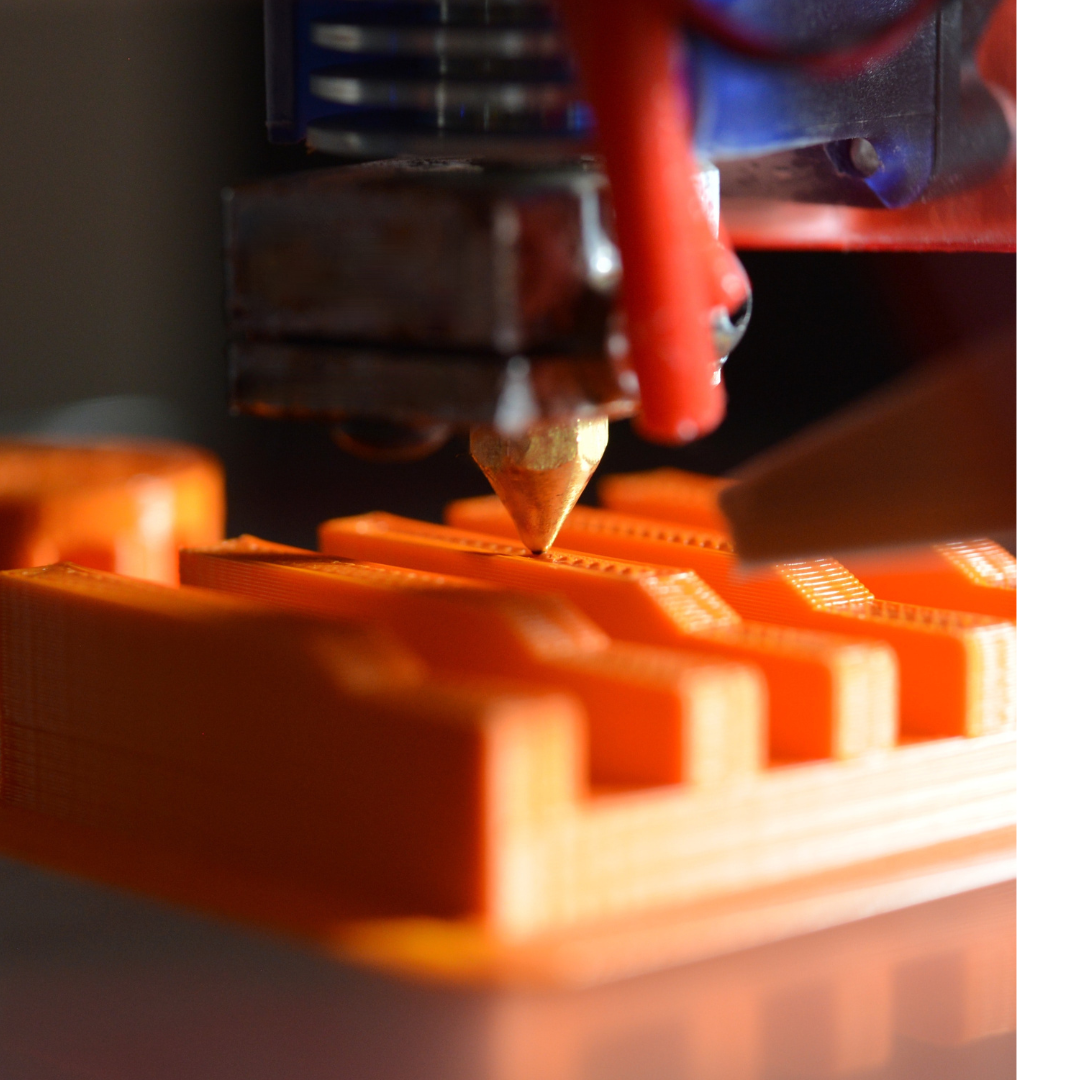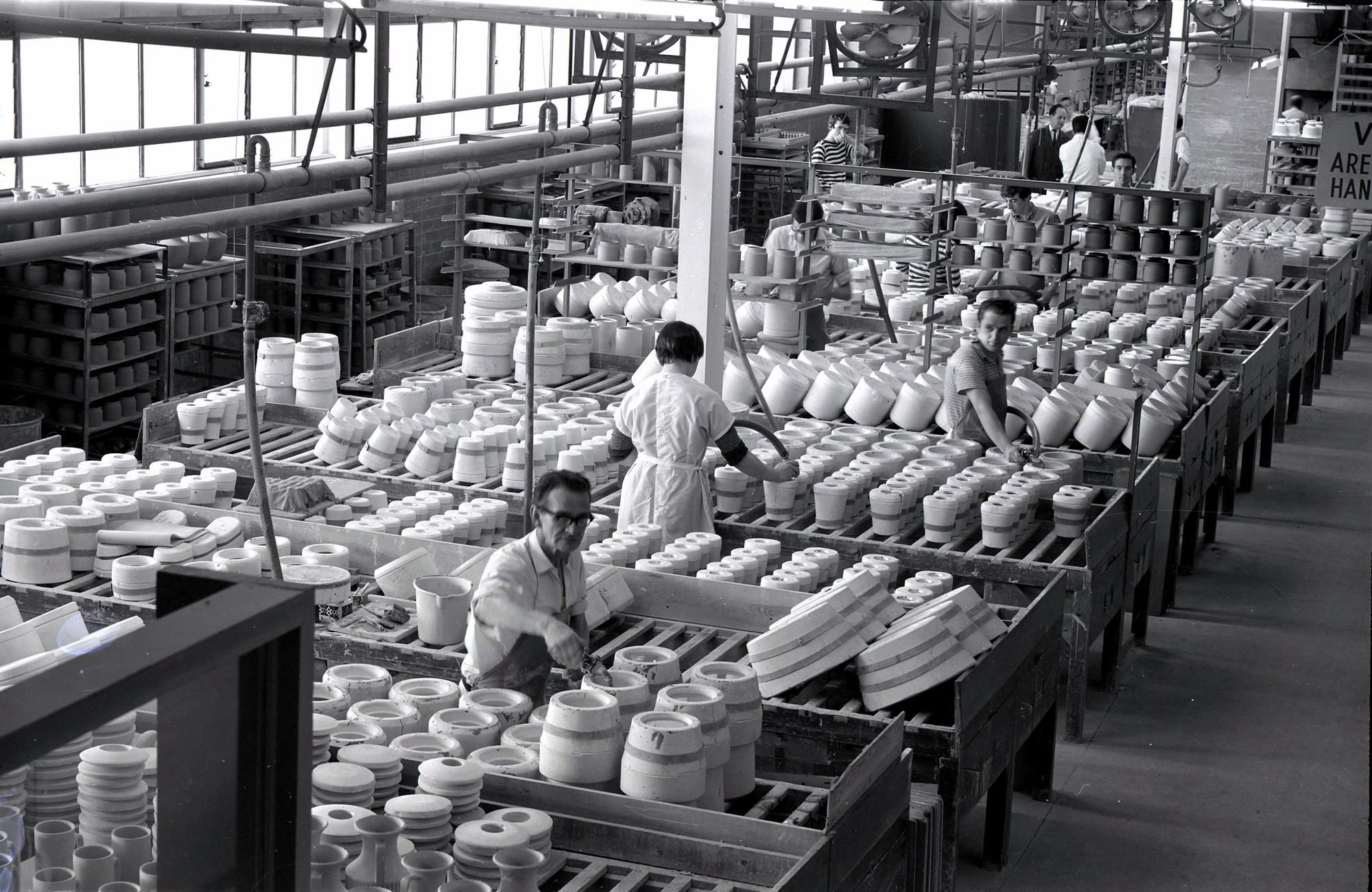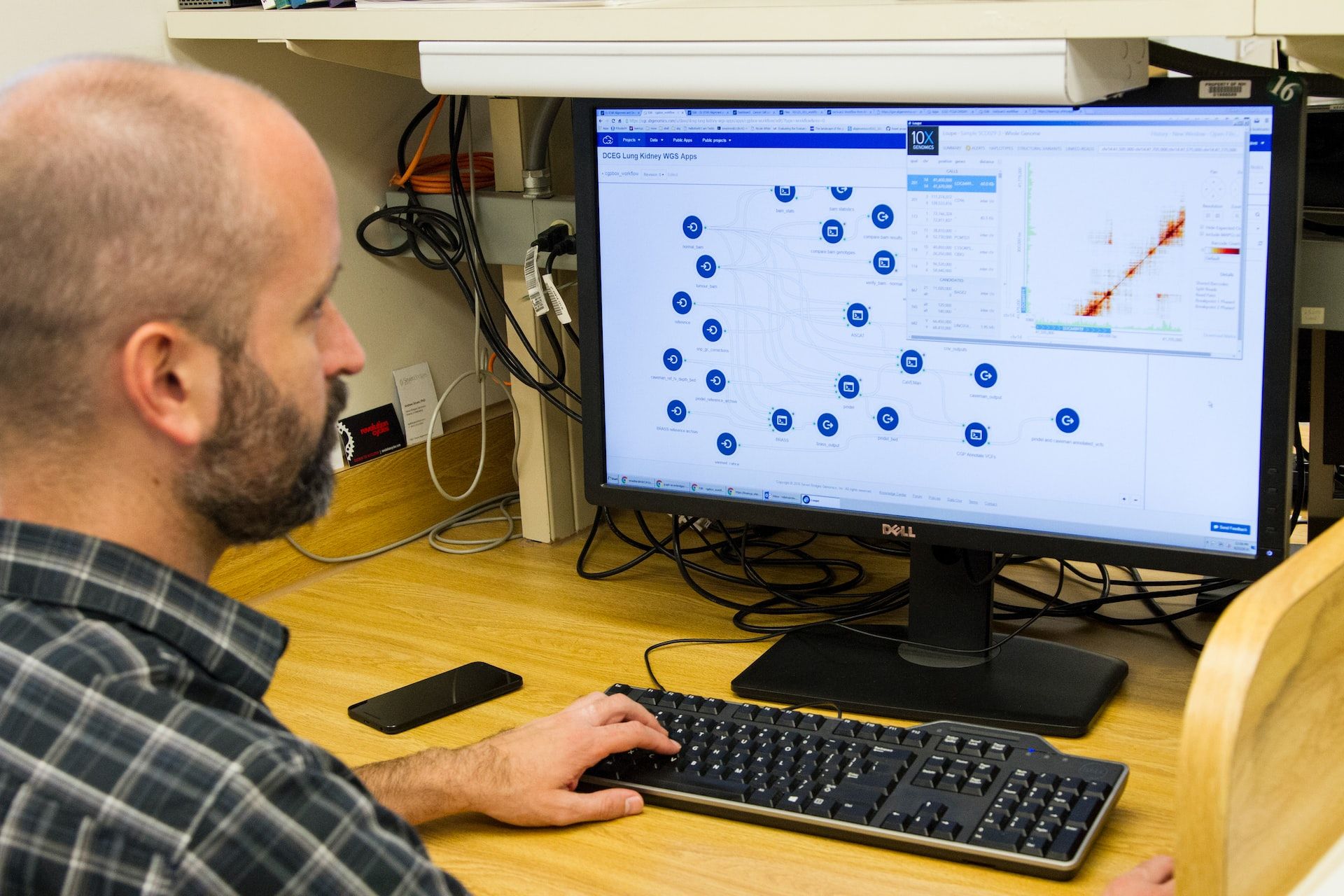The production of plastic is a significant sector that is important to contemporary society. Undoubtedly, plastics are widely employed in many different industries, from plastic packaging to medical equipment, electronics, and automobile parts.
Nonetheless, there is a need to boost plastic manufacturing efficiency due to the rising demand for plastics and the mounting push to reduce waste and environmental damage. In today's guide, we'll cover all aspects associated with strategies for improving the efficiency of plastic manufacturing.
Let's take a look at the table of content that we'll study further:
- Need to Improve the Efficiency of Plastic Manufacturing
- Different Factors that Can Affect the Efficiency of Plastic Manufacturing
- Strategies for Improving the Efficiency of Plastic Manufacturing
- Wrapping Up
- How Deskera Can Assist You?
Let's get started!
Need to Improve the Efficiency of Plastic Manufacturing
The need to improve efficiency in plastic manufacturing is driven by several factors, including cost, quality, and sustainability. First and foremost, improving efficiency can help reduce production costs, which is crucial for plastic manufacturers who operate in highly competitive markets.
Moreover, by optimizing manufacturing processes, reducing waste, and improving resource utilization, plastic manufacturers can lower their operational costs and remain competitive.
In addition to cost reduction, improving efficiency can also help improve the quality of plastic products. Moreover, plastic producers may create high-quality items that meet or beyond consumer expectations by reducing mistakes, flaws, and deviations during the manufacturing process. This, in turn, can lead to increased customer satisfaction, repeat business, and a better reputation in the industry.
Finally, improving efficiency in plastic manufacturing is critical for sustainability. Plastic waste is a significant environmental concern, with millions of tons of plastic waste generated each year globally. By optimizing manufacturing processes, reducing waste, and improving resource utilization, plastic manufacturers can reduce their environmental footprint and contribute to a more sustainable future.
Overall, improving the efficiency of plastic manufacturing is crucial for cost reduction, quality improvement, and sustainability. By implementing strategies to optimize equipment, raw materials, processes, and workforce, plastic manufacturers can improve their efficiency and remain competitive in a rapidly changing industry.
Different Factors that Can Affect the Efficiency of Plastic Manufacturing
There are several factors that can affect the efficiency of plastic manufacturing, including:
Equipment:
The type and quality of equipment used in plastic manufacturing can have a significant impact on efficiency. Outdated or poorly maintained machinery can lead to production delays, defects, and inefficiencies, resulting in increased costs and lower quality products.
Upgrading to more efficient and modern equipment can improve the efficiency of the manufacturing process, reduce downtime, and increase throughput.
Raw Materials:
The quality and consistency of raw materials used in plastic manufacturing can affect the efficiency of the production process. Poor-quality raw materials can lead to defects and inconsistencies in the final product, leading to increased waste and lower production efficiency.
Proper handling, storage, and quality control measures can help ensure that the raw materials used in plastic manufacturing meet the required standards and specifications.
Process Design:
The design of the manufacturing process can significantly impact efficiency. Poorly designed processes can lead to bottlenecks, excessive waste, and increased production time, reducing efficiency.
Optimizing process design, improving production line layouts, and implementing lean manufacturing principles can help streamline the manufacturing process and improve efficiency.
Workforce:
The skill and knowledge of the workforce can impact the efficiency of plastic manufacturing. A poorly trained workforce can lead to errors, downtime, and inefficiencies, reducing overall productivity. Proper training, cross-training, and incentives for skill development can help improve the efficiency of the workforce and increase productivity.
All in all, equipment, raw materials, process design, and workforce are critical factors that can affect the efficiency of plastic manufacturing. By addressing these factors, plastic manufacturers can improve the efficiency of their operations, reduce costs, and improve product quality.
Strategies for Improving the Efficiency of Plastic Manufacturing
Following, we've discussed strategies for improving the efficiency of plastic manufacturing. Let's discuss:
A. Equipment Upgrades and Optimization
The equipment used in plastic manufacturing plays a critical role in determining the efficiency of the production process. Using the right equipment for specific plastic manufacturing processes can improve production efficiency and product quality.
Following, we've discussed some crucial strategies for improving equipment performance include:
Regular maintenance: Regular maintenance of equipment is essential for ensuring that machines operate at peak efficiency. Regular maintenance can help prevent breakdowns, reduce downtime, and extend the lifespan of equipment. Proper lubrication, cleaning, and calibration can help keep equipment in good condition and prevent equipment failure.
Upgrading to more efficient machines: Upgrading to more efficient machines can significantly improve the efficiency of plastic manufacturing operations. Newer equipment often has improved energy efficiency, faster cycle times, and improved accuracy, resulting in increased throughput and higher-quality products.
Automation: Automating parts of the manufacturing process can help improve efficiency and reduce labor costs. Automation can help reduce the time required for manual tasks, minimize errors, and improve accuracy. Automation can also help reduce the need for manual labor, allowing workers to focus on other critical tasks.
Process optimization: Process optimization can help improve the efficiency of the equipment used in plastic manufacturing. Optimizing the process can help reduce the time required for each step, improve equipment utilization, and increase throughput. Analyzing and optimizing the manufacturing process can help identify bottlenecks and inefficiencies, leading to improvements in overall efficiency.
In summary, improving equipment performance through regular maintenance, upgrading to more efficient machines, automation, and process optimization can significantly improve the efficiency of plastic manufacturing. By implementing these strategies, plastic manufacturers can increase throughput, improve product quality, and reduce costs.
B. Improved Raw Material Selection and Handling
The raw materials used in plastic manufacturing have a significant impact on the efficiency of the production process. Using high-quality raw materials can help reduce waste, improve product quality, and increase efficiency.
Following, we've discussed some important strategies for improving raw material selection and handling include:
Implementing Quality Control Measures: Implementing quality control measures can help ensure that only high-quality raw materials are used in the manufacturing process. Quality control measures can include inspection, testing, and certification of raw materials to ensure that they meet the required standards and specifications.
Using Advanced Monitoring Systems: Using advanced monitoring systems can help improve the handling of raw materials. For example, using sensors to monitor the temperature and humidity of raw materials during storage and transportation can help prevent degradation and ensure that the materials remain in optimal condition.
Minimizing Waste: Minimizing waste can help improve the efficiency of plastic manufacturing operations. By reducing waste, manufacturers can save on raw material costs, reduce the amount of waste generated, and improve efficiency. Strategies for minimizing waste include recycling and reusing materials, using precision cutting and molding techniques, and implementing lean manufacturing principles.
Optimizing Inventory Management: Optimizing inventory management can help ensure that the right raw materials are available when needed, reducing delays and improving efficiency. Inventory management strategies can include just-in-time inventory systems, real-time tracking of raw materials, and efficient supply chain management.
Eventually, improving raw material selection and handling through quality control measures, advanced monitoring systems, waste reduction, and optimized inventory management can significantly improve the efficiency of plastic manufacturing. By implementing these strategies, plastic manufacturers can reduce waste, improve product quality, and increase efficiency.
C. Process Design Optimization
The design of the plastic manufacturing process has a significant impact on efficiency, product quality, and cost-effectiveness. By optimizing the process design, manufacturers can reduce waste, increase throughput, and improve product quality.
Following, we've discussed important strategies for optimizing process design include:
Improving Production Line Layouts: Improving the layout of the production line can help reduce bottlenecks, minimize movement of materials, and optimize the flow of materials through the process. A well-designed production line can improve efficiency, reduce cycle time, and increase throughput.
Implementing Lean Manufacturing Principles: Lean manufacturing principles aim to reduce waste and improve efficiency by streamlining the manufacturing process. By minimizing non-value-added activities, reducing inventory, and optimizing workflows, manufacturers can improve the efficiency of the process, reduce costs, and increase customer satisfaction.
Using Advanced Computer Simulations: Using computer simulations can help manufacturers optimize the process design by identifying potential bottlenecks and inefficiencies before production begins. Simulations can help identify optimal production sequences, identify and eliminate waste, and optimize equipment utilization.
Continuous Improvement: Continuously evaluating and improving the process design can help ensure that the manufacturing process remains efficient and cost-effective over time. By collecting and analyzing data on the process, manufacturers can identify areas for improvement and implement changes to optimize efficiency and reduce costs.
So, optimizing the process design through improved production line layouts, lean manufacturing principles, computer simulations, and continuous improvement can significantly improve the efficiency of plastic manufacturing. By implementing these strategies, manufacturers can reduce waste, increase throughput, and improve product quality, ultimately leading to cost savings and increased customer satisfaction.
D. Workforce and Training Development
The success of plastic manufacturing depends on having a skilled and knowledgeable workforce. Skilled workers can identify and solve problems quickly, improve efficiency, and reduce waste. Below, we've discussed some important strategies for workforce training and development include:
Implementing comprehensive training programs: Comprehensive training programs can help employees develop the knowledge and skills necessary to perform their jobs effectively. Training programs can include both classroom and hands-on training, as well as ongoing education to keep employees up to date with the latest technology and best practices.
Cross-training employees: Cross-training employees can help improve the flexibility of the workforce, reduce downtime, and improve efficiency. By training employees to perform multiple tasks, manufacturers can ensure that work continues even if an employee is absent or if a particular skill is in high demand.
Incentivizing skill development: Incentivizing skill development can help motivate employees to learn new skills and take on new responsibilities. Incentives can include pay raises, promotions, bonuses, and recognition for achieving certain training or performance milestones.
Providing opportunities for advancement: Providing opportunities for advancement can help retain skilled employees and encourage them to continue developing their skills. Advancement opportunities can include promotions, additional training, and the opportunity to take on more challenging or complex roles.
Overall, developing a skilled and knowledgeable workforce through comprehensive training programs, cross-training, incentivizing skill development, and providing opportunities for advancement can significantly improve the efficiency of plastic manufacturing. By investing in the workforce, manufacturers can improve efficiency, reduce waste, and improve product quality, ultimately leading to cost savings and increased customer satisfaction.
Wrapping Up
In conclusion, improving the efficiency of plastic manufacturing is crucial for reducing costs, increasing productivity, and improving product quality. Factors such as equipment, raw materials, process design, and workforce all play important roles in the efficiency of plastic manufacturing.
Implementing strategies such as equipment upgrades and optimization, improved raw material selection and handling, process design optimization, and workforce training and development can help manufacturers improve efficiency, reduce waste, and improve product quality.
By optimizing their manufacturing processes, manufacturers can reduce costs, increase customer satisfaction, and remain competitive in the marketplace. Eventually, it is crucial for manufacturers to continually evaluate and improve their processes to remain efficient, productive, and profitable in the long run.
How Deskera Can Assist You?
Deskera's integrated financial planning tools allow investors to better plan their investments and track their progress. It can help investors make decisions faster and more accurately.
Deskera Books enables you to manage your accounts and finances more effectively. Maintain sound accounting practices by automating accounting operations such as billing, invoicing, and payment processing.

Deskera CRM is a strong solution that manages your sales and assists you in closing agreements quickly. It not only allows you to do critical duties such as lead generation via email, but it also provides you with a comprehensive view of your sales funnel.
Deskera People is a simple tool for taking control of your human resource management functions. The technology not only speeds up payroll processing but also allows you to manage all other activities such as overtime, benefits, bonuses, training programs, and much more. This is your chance to grow your business, increase earnings, and improve the efficiency of the entire production process.
Final Takeaways
We've arrived at the last section of this guide. Let's have a look at some of the most important points to remember:
- The need to improve efficiency in plastic manufacturing is driven by several factors, including cost, quality, and sustainability. First and foremost, improving efficiency can help reduce production costs, which is crucial for plastic manufacturers who operate in highly competitive markets.
- The type and quality of equipment used in plastic manufacturing can have a significant impact on efficiency. Outdated or poorly maintained machinery can lead to production delays, defects, and inefficiencies, resulting in increased costs and lower quality products.
- Poor-quality raw materials can lead to defects and inconsistencies in the final product, leading to increased waste and lower production efficiency. Proper handling, storage, and quality control measures can help ensure that the raw materials used in plastic manufacturing meet the required standards and specifications.
- The equipment used in plastic manufacturing plays a critical role in determining the efficiency of the production process. Using the right equipment for specific plastic manufacturing processes can improve production efficiency and product quality.
- Upgrading to more efficient machines can significantly improve the efficiency of plastic manufacturing operations. Newer equipment often has improved energy efficiency, faster cycle times, and improved accuracy, resulting in increased throughput and higher-quality products.
- The design of the plastic manufacturing process has a significant impact on efficiency, product quality, and cost-effectiveness. By optimizing the process design, manufacturers can reduce waste, increase throughput, and improve product quality.
- Comprehensive training programs can help employees develop the knowledge and skills necessary to perform their jobs effectively. Training programs can include both classroom and hands-on training, as well as ongoing education to keep employees up-to-date with the latest technology and best practices.
- Incentivizing skill development can help motivate employees to learn new skills and take on new responsibilities. Incentives can include pay raises, promotions, bonuses, and recognition for achieving certain training or performance milestones.
Related Articles













